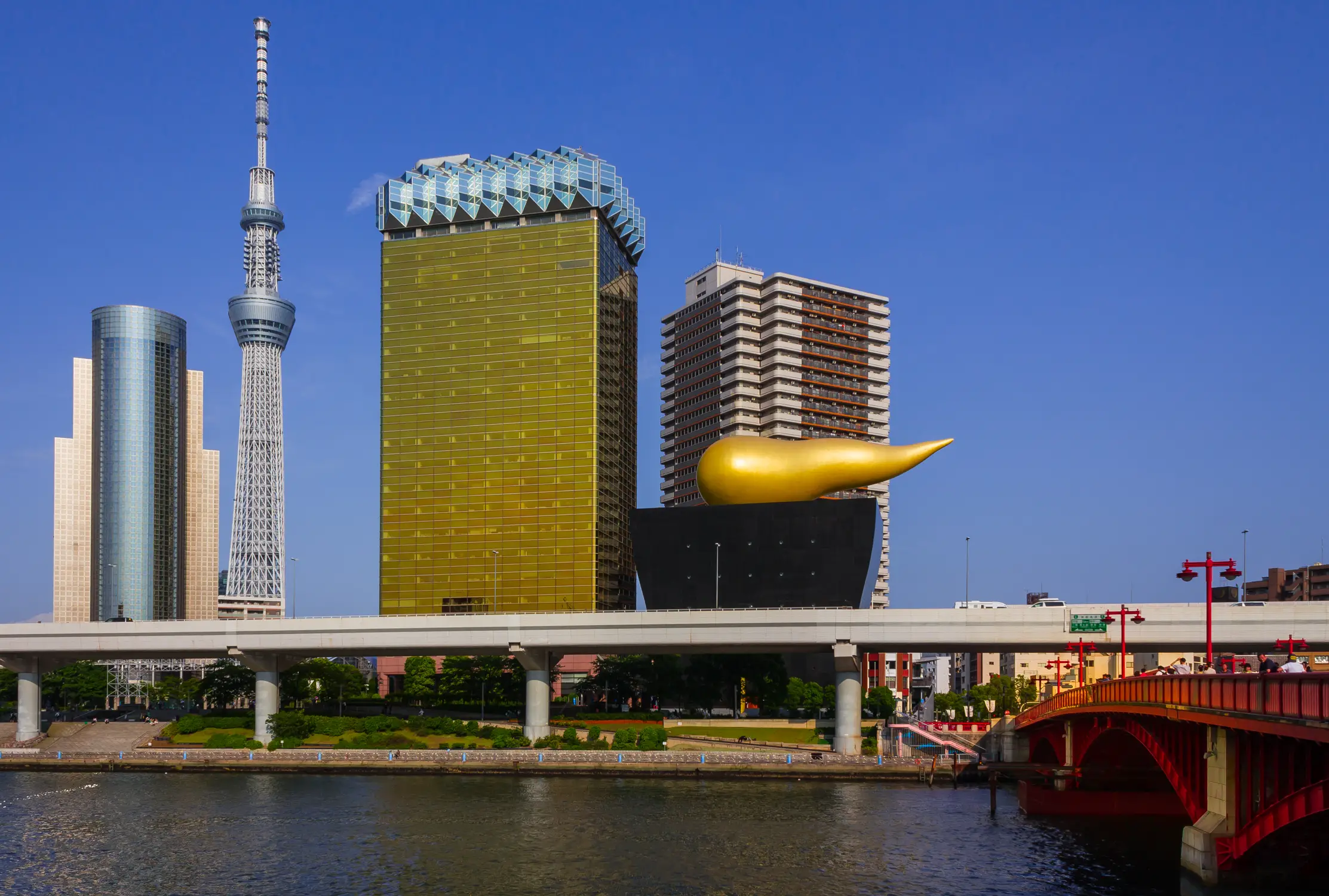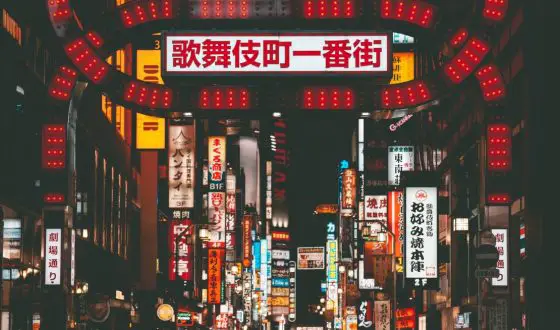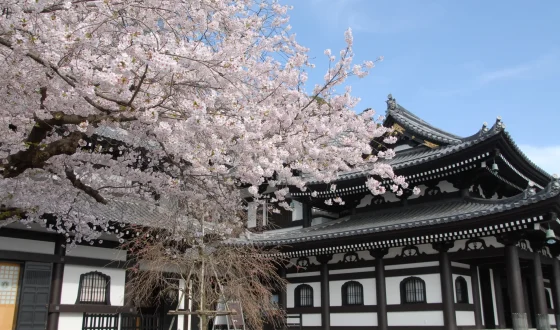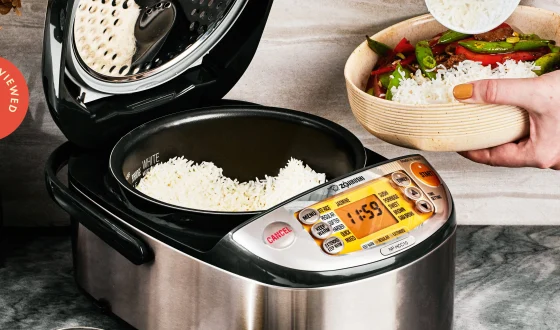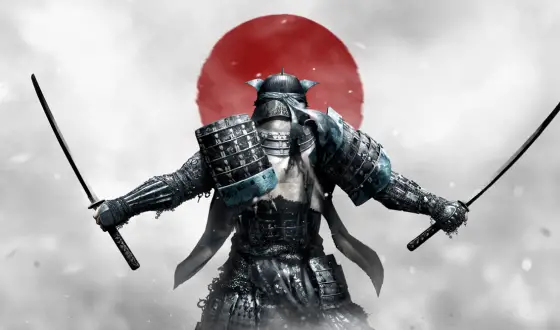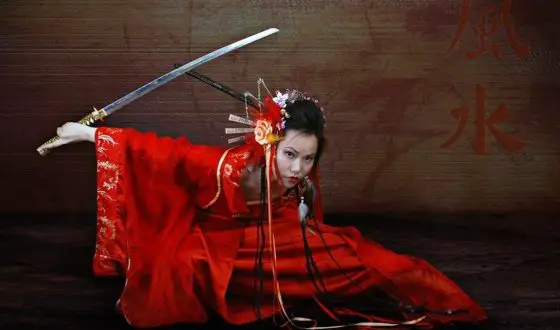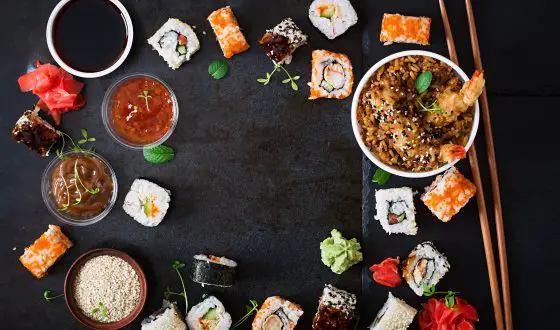Top 10 Things To Do In Asakusa
Asakusa is a traditional downtown area in Tokyo, home to the oldest temple in the city which makes it famous to foreign tourist. Before most of the area was destroyed during World War II, this district used to be more crowded as the entertainment part of Tokyo. When it was rebuilt, the area became more old-fashioned with the absence of tall buildings and neon signs. This gives Asakusa a different feeling from other popular neighborhood like Shibuya, Akihabara,… With this unique theme of Asakusa, this is definitely a must-visit place for you while in Tokyo. Keep scrolling down because you will find everything you shouldn’t miss out in this area. Here are Top 10 Things To Do In Asakusa.
Top 10 Things To Do in Asakusa
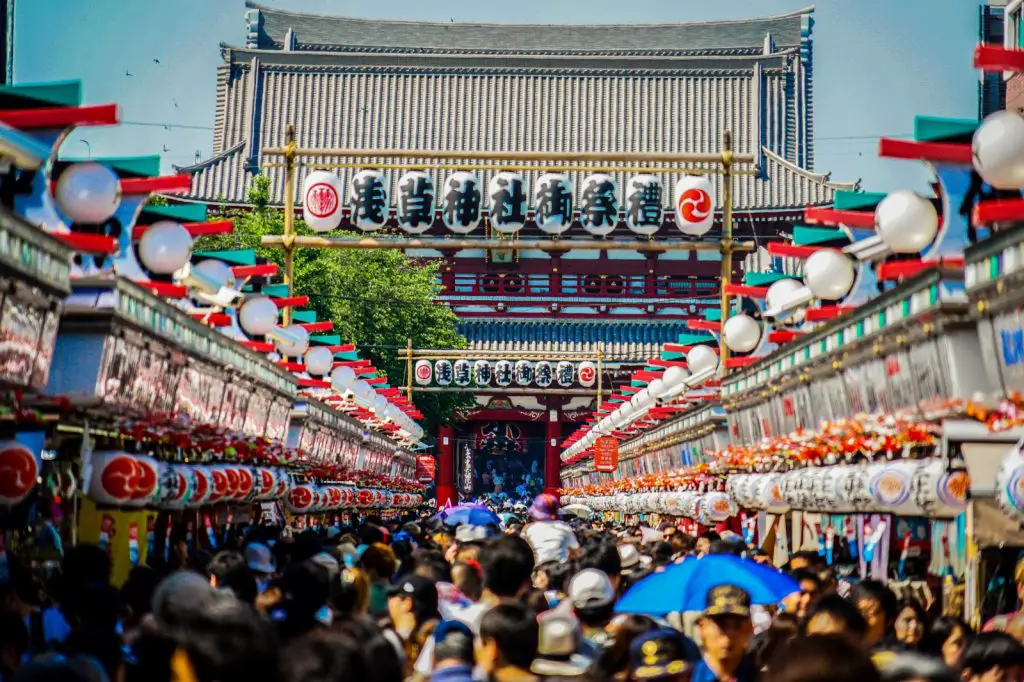
Asakusa, the historical downtown area of Tokyo.
1. Pay A Visit To Sensoji Temple, The Oldest Temple Of Tokyo
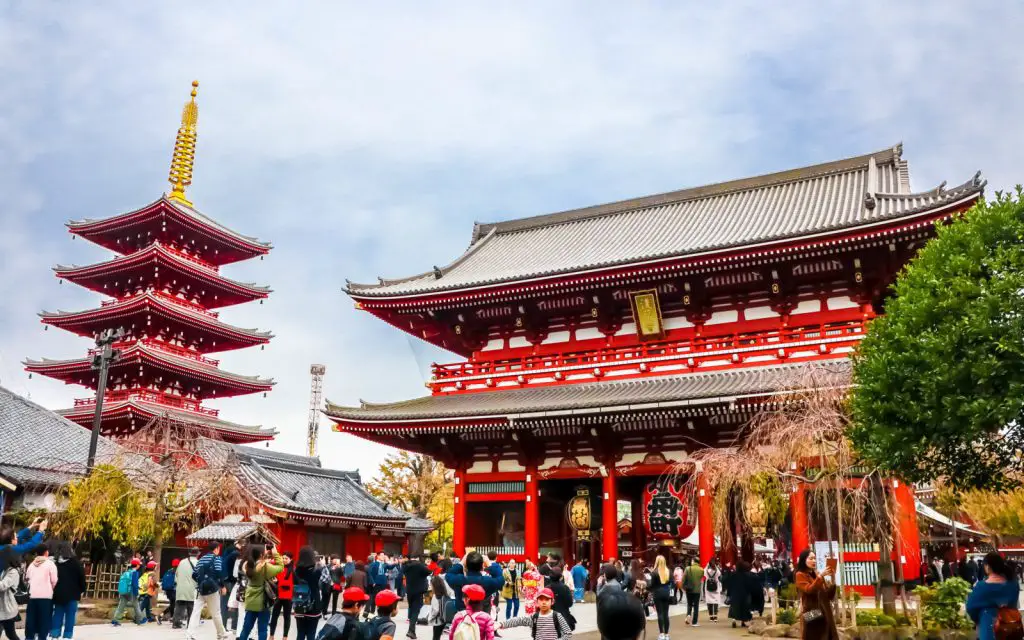
Sensoji Temple, the oldest temple in Tokyo.
Visiting Sensoji Temple should be your first thing to do in Asakusa. Sensoji Temple is a 1300-year-old structure, dating back to the 7th century even though the current temple was mostly reconstructed after World War II. It is one of the most famous tourist attractions in Tokyo. There are lots of things you can do here besides sightseeing. The temple stands out from the area thanks to its entrance gate called Kaminarimon or “Thunder Gate”. With its huge lantern and towering statues, make sure to pass through the gate to truly feel its grand size.
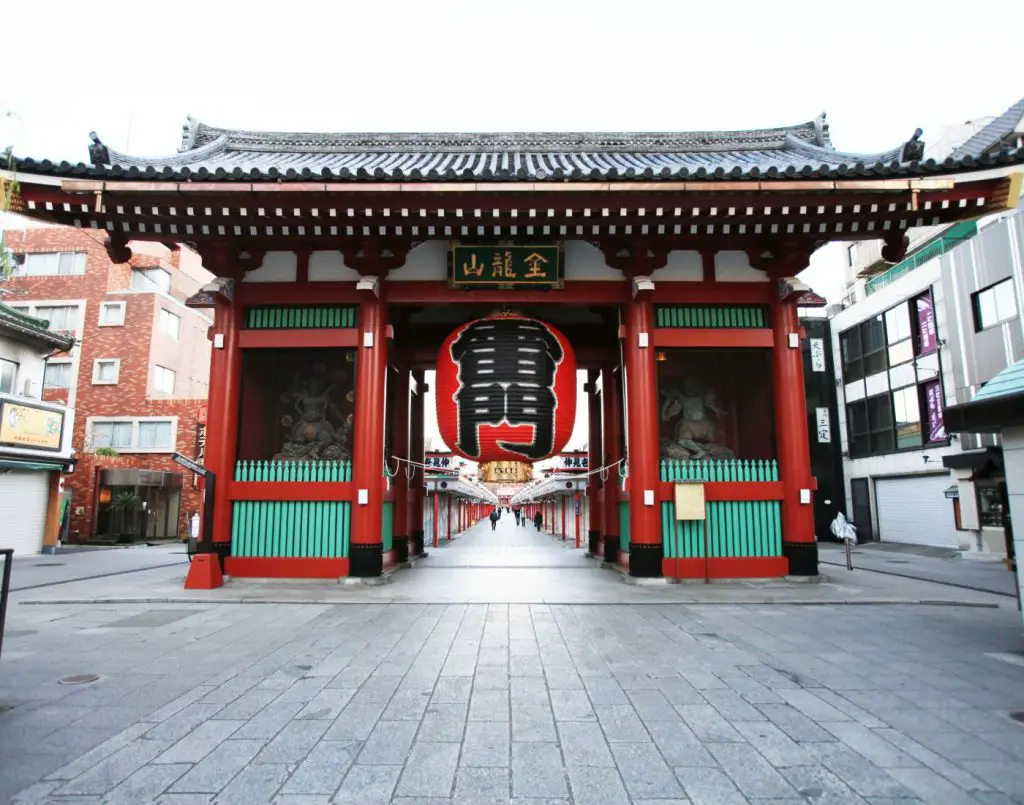
Kaminarimon, the entrance gate of Sensoji Temple with a massive lantern.
People coming to Sensoji Temple can have their fortune told for just 100 yen (I know that’s a real bargain). Approach to omikuji station at Sensoji Temple, donate 100 yen into the box, then you can draw a stick that corresponds to your fortune slip. Keep it if it’s a good fortune. In case it’s a bad one, don’t worry, you can tie it on a tree or a pole nearby so that it won’t follow you home.
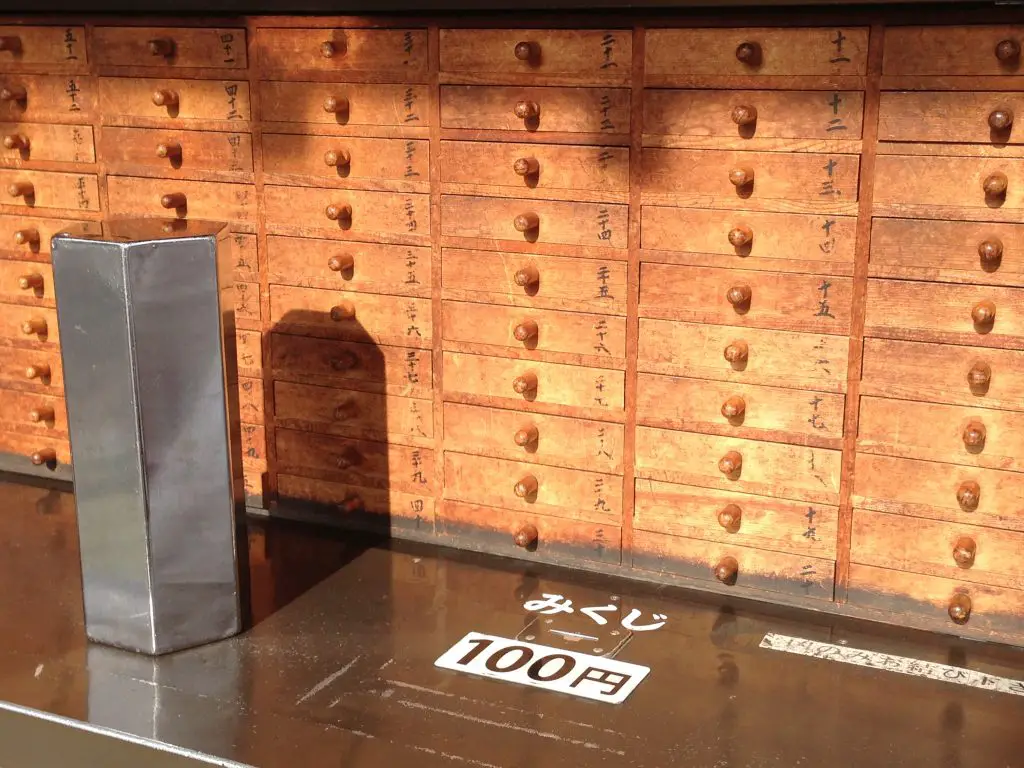
Get your fortune told at Sensoji temple for just 100 yen.
Have you ever heard about purification by smoke? If not, you should really check out this weird but interesting experience at Sensoji Temple. Here, you will see a dragon-themed fountain and large pot emitting smoke, people gather around it and gently waft the smoke towards them. That’s how people do to get purified.
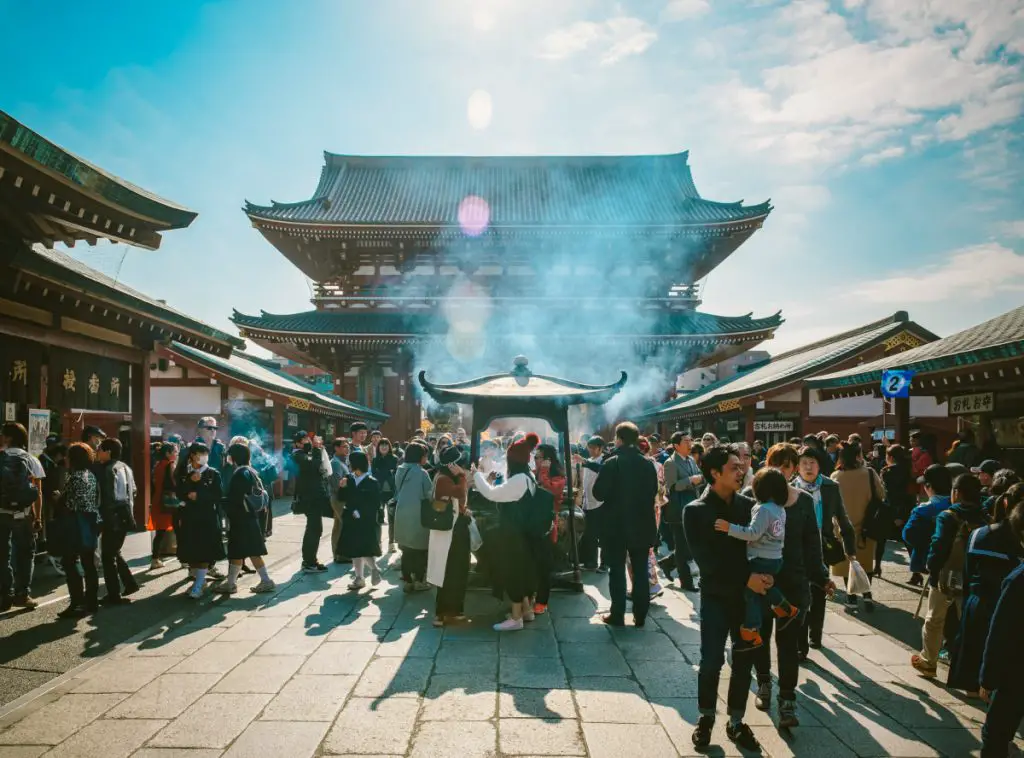
People gather around the large pot giving off smoke to purify themselves.
In this area not only stands the oldest temple but also the most ancient shopping street in Tokyo: Nakamise Dori. Nakamise Dori is a 250-meter long pedestrian shopping street that leads to Sensoji Temple from Kaminarimon. This street is always full of people selling and buying everything from Japanese street snacks to fancy souvenirs.
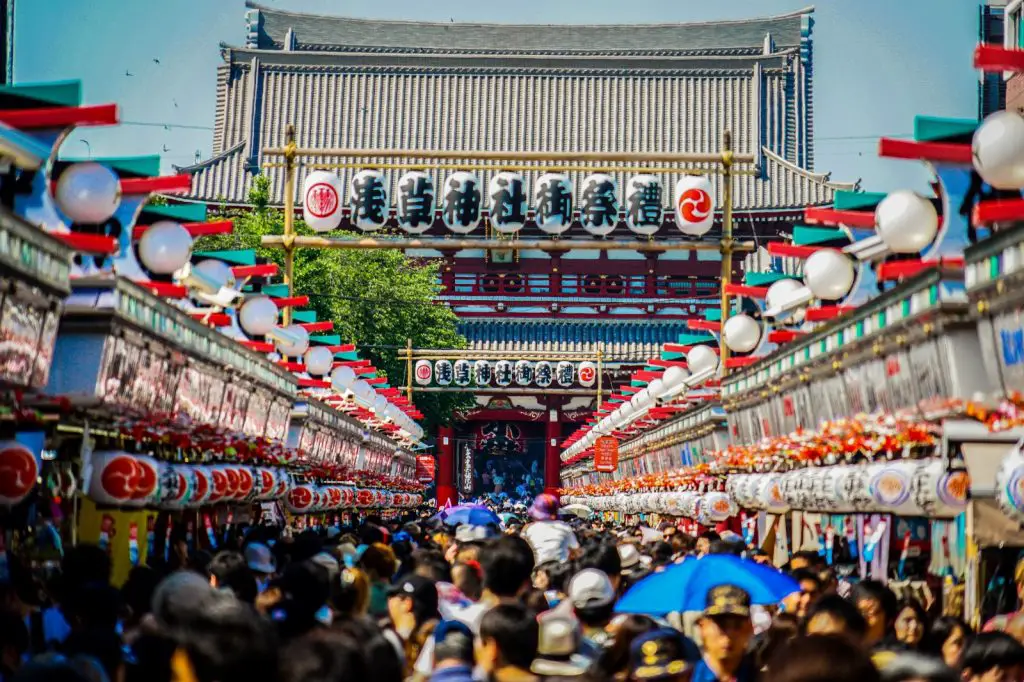
Nakamise shopping street where you can buy souvenirs and Japanese street snacks.
2. Get The Free View Of Asakusa
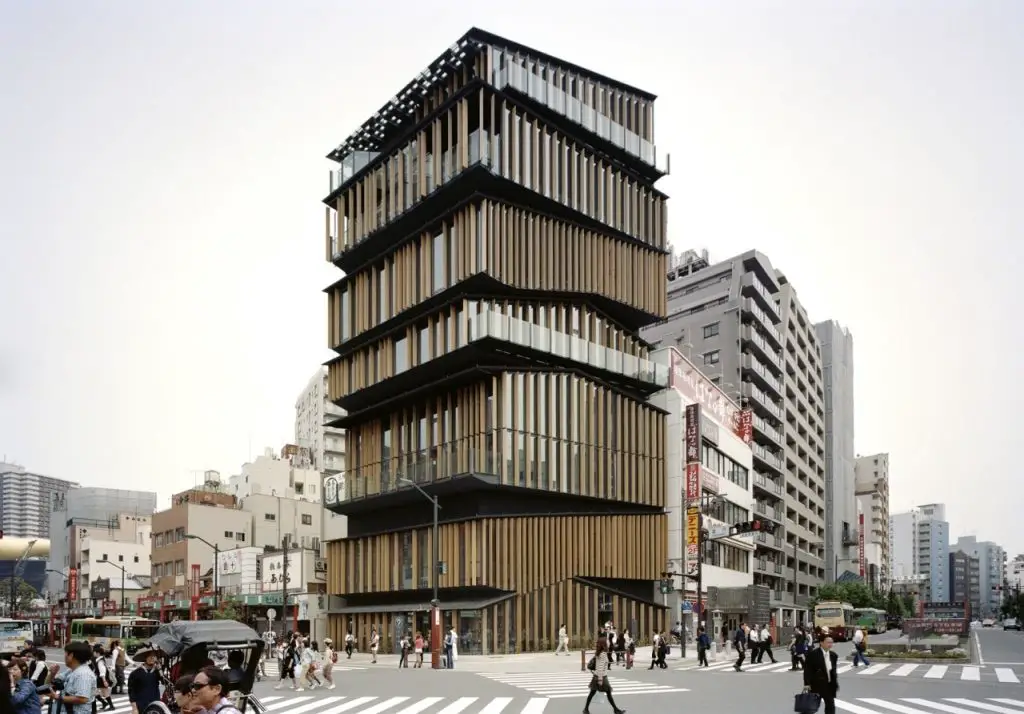
Asakusa Culture Tourism Information Centre.
Asakusa Culture Tourist Information Centre is a place to go if you want to check out the whole view of Asakusa. The building stands right across Kaminarimon, the entrance gate of Sensoji Temple. On the eighth floor, there is an observation deck, from here you are free to take in a clear and full sweeping view of Sensoji Temple, Kaminarimon, Nakamise Dori Street and Tokyo Skytree all at once. This is also a perfect place for someone who is looking for free wifi, grab a bite to eat or get guidance and support while sightseeing in Asakusa.
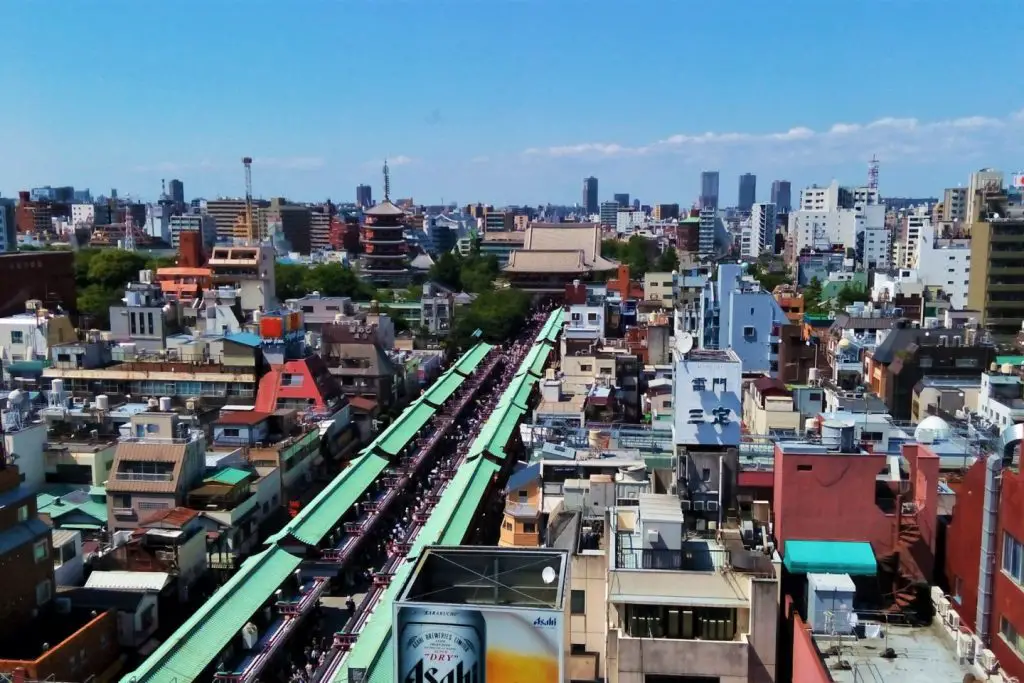
The clear and full sweeping view of Sensoji Temple, Kaminarimon, Nakamise Dori Street and Tokyo Skytree all at once
3. Enjoy Japan’s Oldest Museum Park: Hanayashiki
In case you don’t know what to do next in Asakusa, spending time exploring the oldest amusement park in Japan is a great choice for you. The oldest temple, the oldest shopping street and now is the oldest amusement park, these are the reason why Asakusa is the Kyoto of Tokyo. Hanayashiki amusement park was built almost 70 years ago and is still in operation nowadays. If you travel with your family, this is the place to go and it only takes a short walk from Sensoji Temple. There are about twenty-five attractions here such as roller coasters, a merry-go-round, and even haunted house.
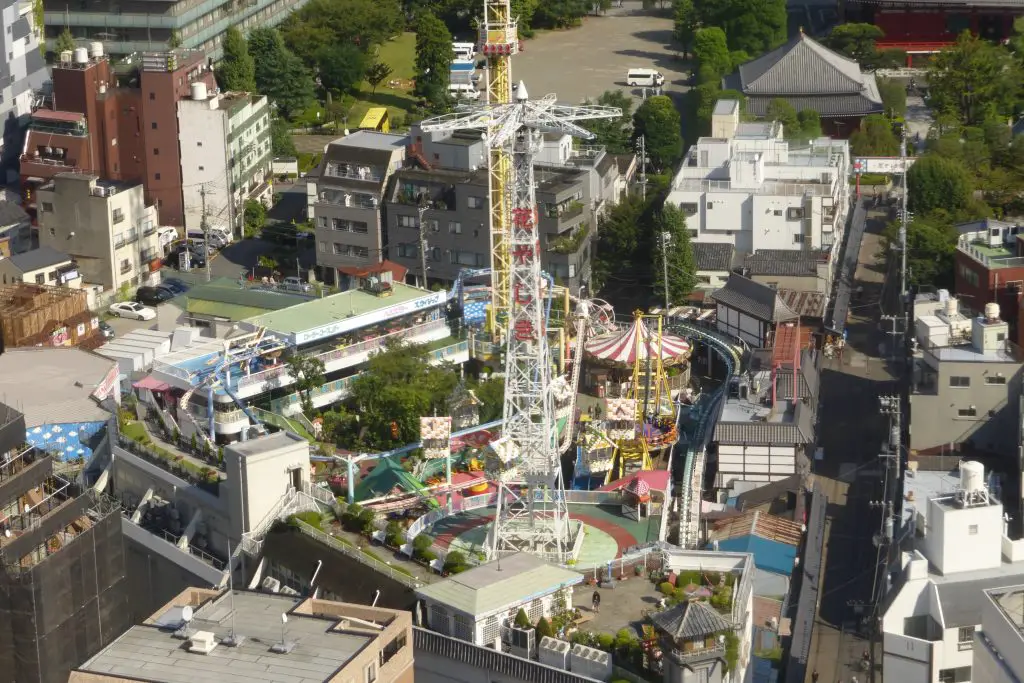
Hanayashiki, the oldest amusement park in Tokyo.
4. Explore Sumida River Cruise
Exploring this traditional area from a different angle is such an enjoyable thing for anyone who wants to try something new. If you get on the cruise in Asakusa, there are four destinations available: Hamarikyu, Hinode, Odaiba, and Toyosu. Cruises to these destinations run throughout the year, you can book tickets online in advance or buy in Asakusa Pier on the day.
The most popular route is from Asakusa to Odaiba Seaside Park. It takes about 70 minutes to reach the final destination. What makes it outstanding from the list is the cinematic view of Tokyo Bay, plentiful of shopping and dining facilities. Spending an afternoon to enjoy this trip should be on top of your to-do-list.
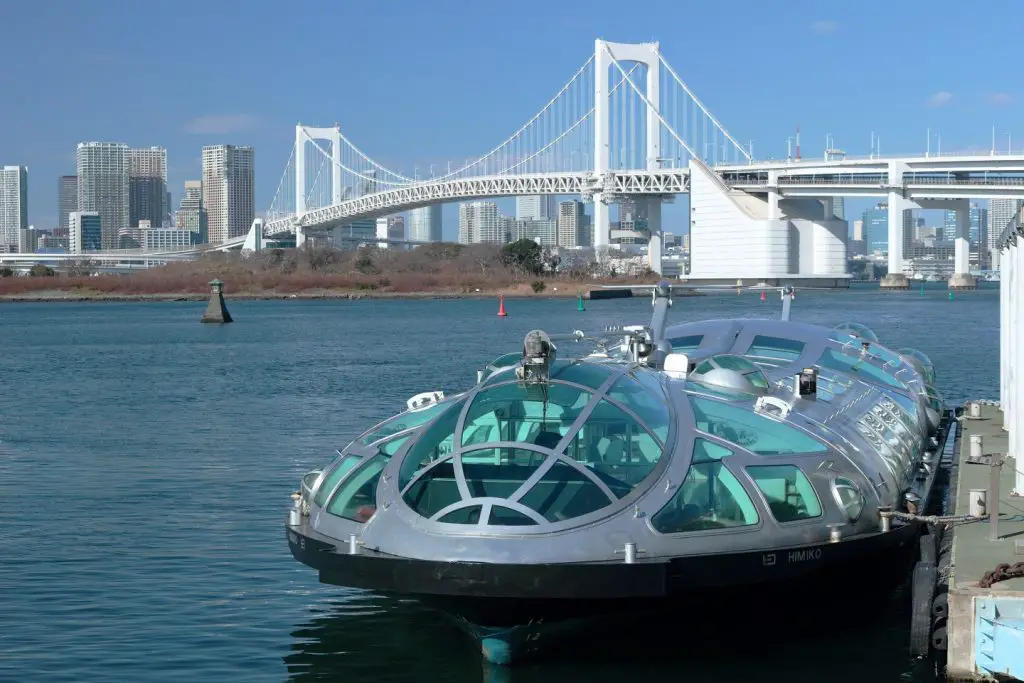
The cinematic view of Tokyo Bay from the boat.
SEE MORE:
You can get off the ship in Toyosu, which also takes 70 minutes to reach. The main tourist attractions here are the Lalaport shopping mall and Tokyo Gas Science Museum.
If you don’t have much time, but still want to do the cruise trip, you can choose the route from Asakusa to Hamarikyu Gardens. Within about half an hour, you will see yourself in a landscaped public park with a pond and traditional tea house. The admission fee for the garden is included in the cruise fare.
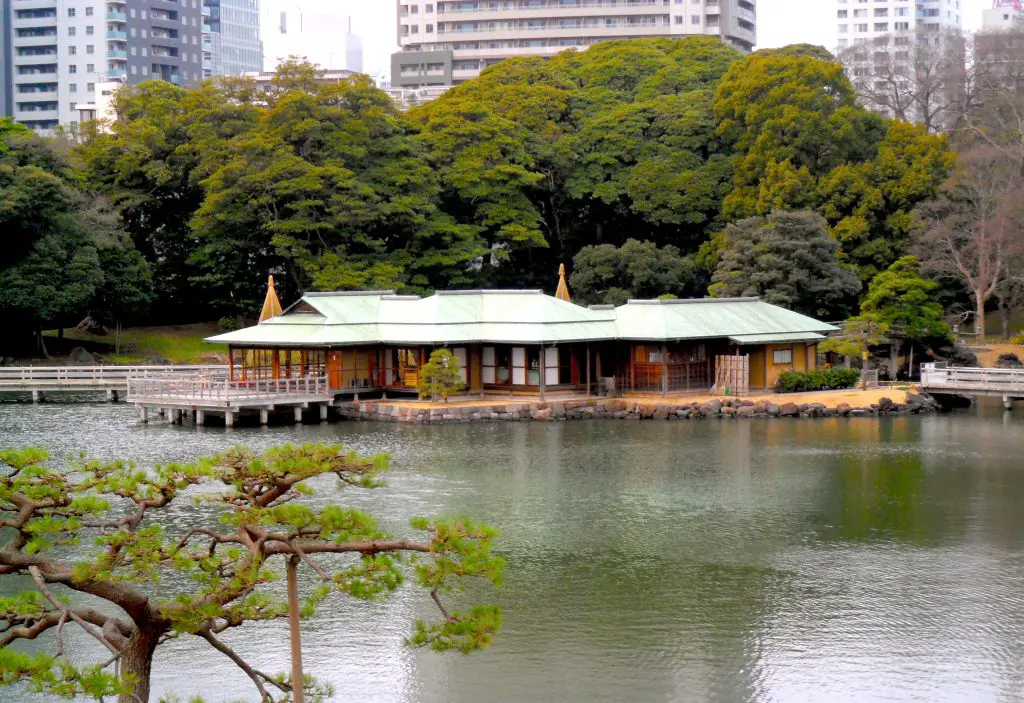
The traditional tea house in Hamarikyu Gardens.
The last route is from Asakusa to Hinode Pier, which takes 40 minutes. This route is convenient if you want to travel to other parts of the city because there 2 stations near here: Hinode Station and Hamamatsucho Station.
5. Grab A Bite For Lunch
So it’s time for you to try some Japanese Street Snack. Let’s take a walk through Nakamise Dori Street and you will definitely find something for your stomach.
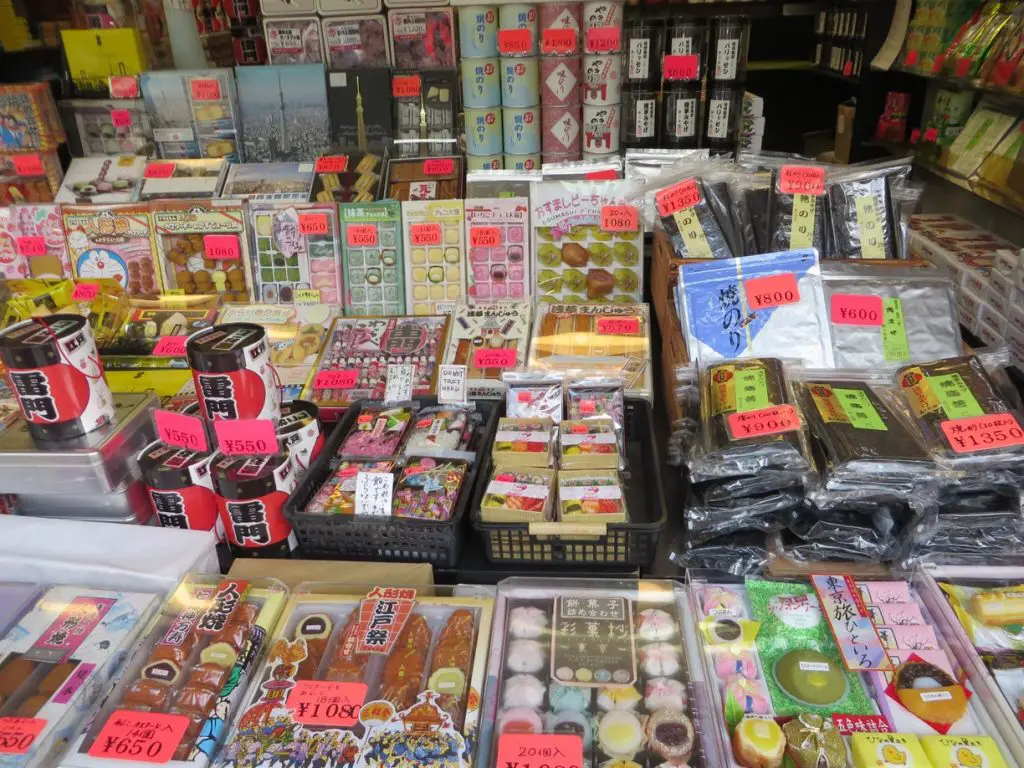
Nakamise Dori street is the perfect place for you if you want to try some Japanese street snacks.
Another snack for you is matcha gelato that you can’t find elsewhere in the world. Offering up to 7 levels of intensity, Suzukien claims that they have the most intense matcha gelato. Usually you should pair a scoop of matcha with a scoop of mild flavor like vanilla, chocolate,… to balance the taste.
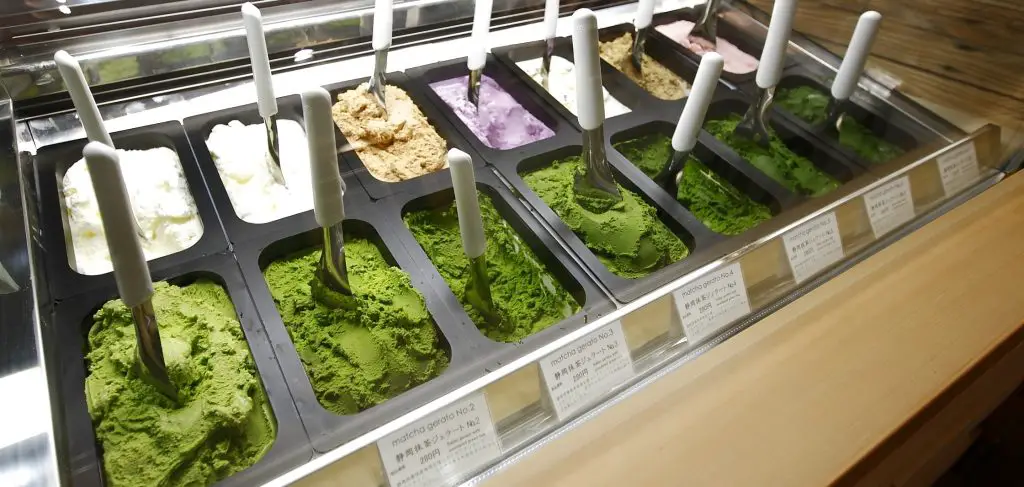
Suzukien offers up to seven levels of matcha intensity.
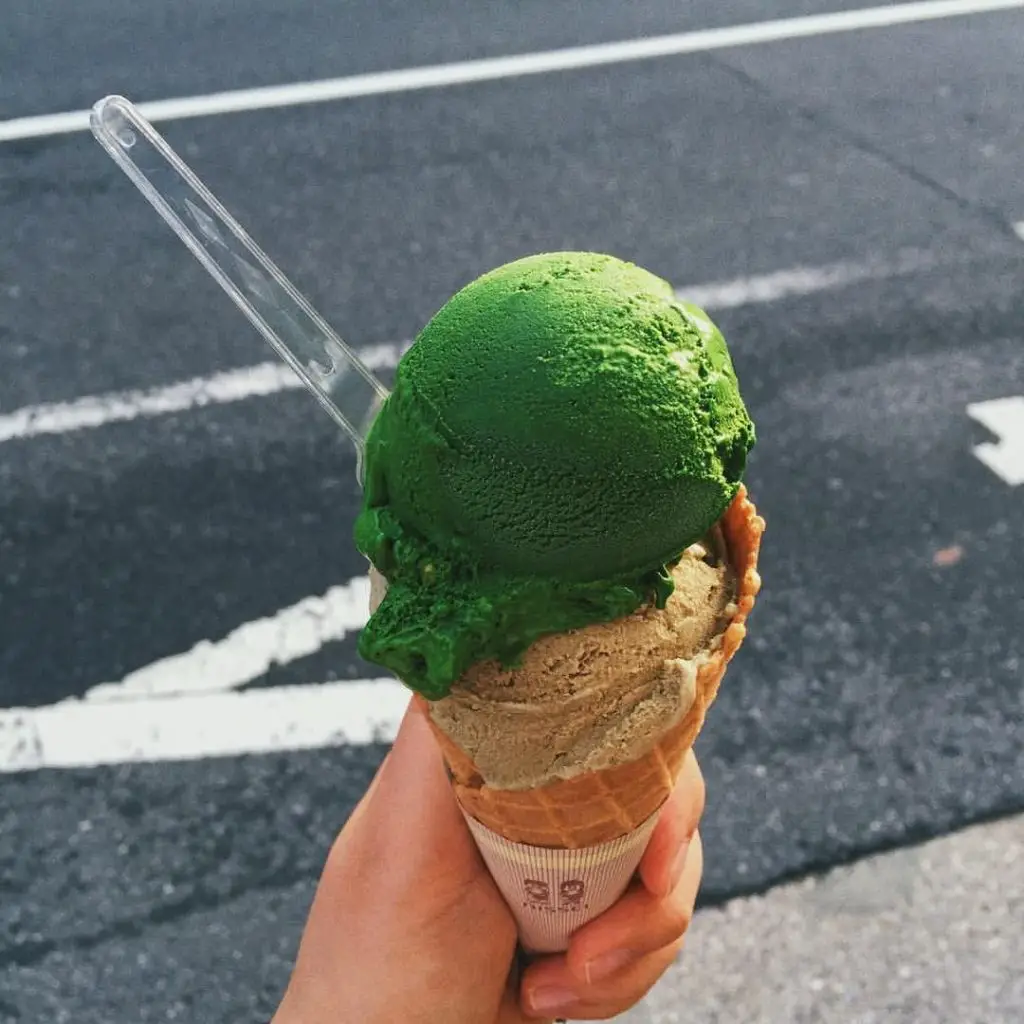
Pair a scoop of matcha with a scoop of mild flavor like vanilla, chocolate,… to balance the taste.
Ningyoyaki is also a must-try local treat, with the shape ranging from fish (the most famous) to another weird shape: hello kitty, cherry blossom,…The cakes are made by pouring batter into molds, and a dollop of sweet red bean paste in the center. You can catch sight of little vendors selling this snack everywhere in Asakusa.

Ningyoyaki with different shapes.
6. Check Out Asakusa’s Underground Shopping center
Having been opened since 1955, this shopping center is a perfect illustration of Japanese postwar picture. There are plenty of Japanese restaurants, bars as well as shops in this shopping center with a very reasonable price. Not only that, the majority of the shops has been in business since the center first opened in 1955. Besides shopping, it is a place to go if you are looking for a spot to take some retro picture of Tokyo life.
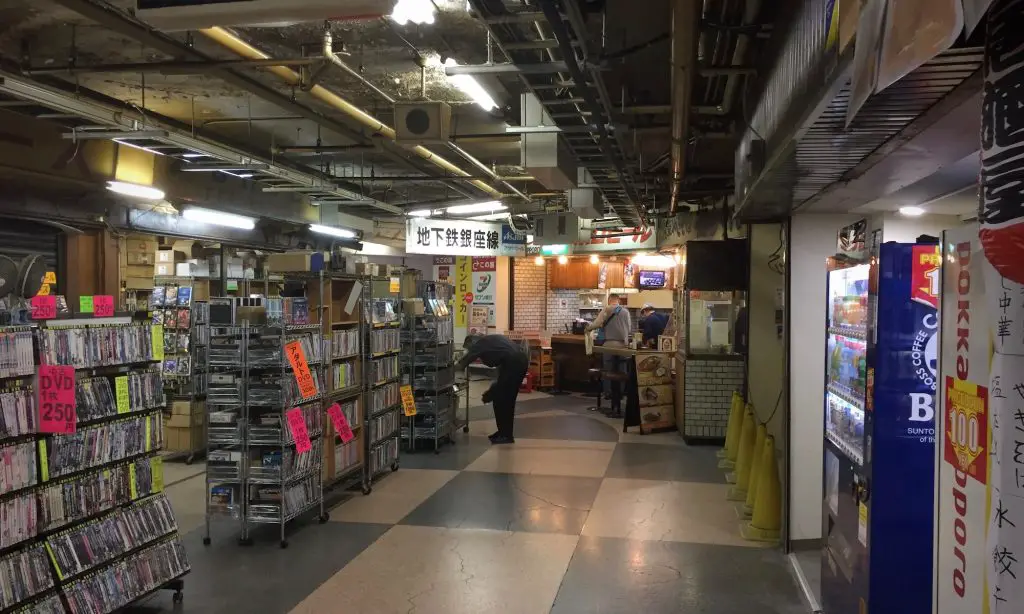
Asakusa’s underground shopping mall, the picture of postwar Japan.
7. Enjoy Nishi Sando Shopping Street
The next thing to do in Asakusa is to visit Nishi Sando, a covered shopping street near Sensoji Temple. When facing this amazing structure, you will find your time travel back to Japan during the Edo period. Although the shopping street is not very long, you are sure to find everything you need here. People often come here to buy souvenirs for their trip, enjoy the tastiest ramen in the region and contemplate beautiful traditional Japanese arts and crafts. So come to visit Nishi Sando shopping street if you want to do a little shopping and a lot of learning Japanese history comes to life.
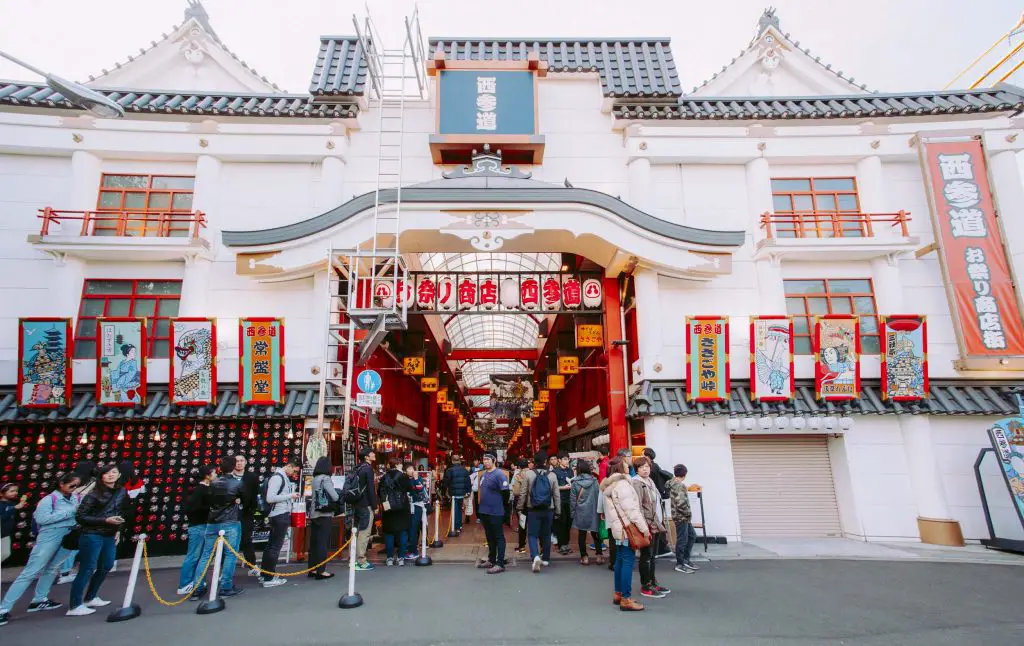
The amazing structure of Nishi Sando Shopping Street from outside.
8. Set Out Shichifukujin Pilgrimage To Find Your Luck
Shichifukujin (or Seven Lucky Gods) is a term describing sevens deities: Daikokuten, Ebisu, Bishamonten, Fukurokuju, Hotei, Jurojin and Benzaiten. Each of these gods grands fortune in different field like career, love, health, business,.. But they are not usually enshrined together at the same shrine or temple. So as the matter of fact, if you want to change your luck, you may have to visit many different places where the deities of good fortune are enshrined. This trip is called Shichifukujin Pilgrimage and it often takes anywhere from two to six hours to fully complete.
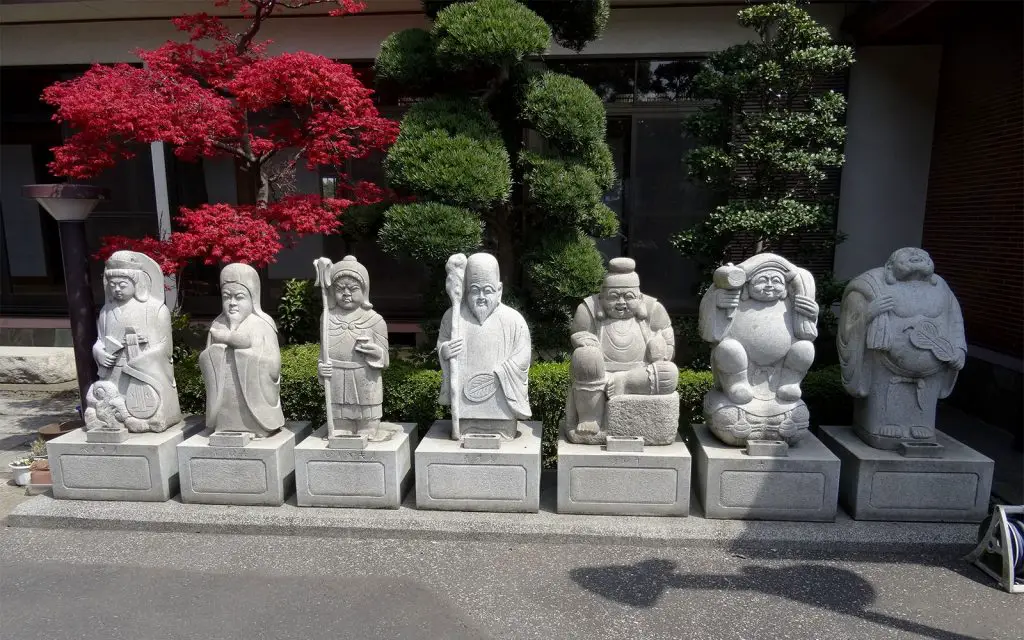
Shichifukujin or seven lucky gods of Japanese people.
If you want to set out this spectacular trip but don’t know where to start, we are here to help you. The route below is highly recommended because it is time-saving (the trip takes about 3 hours) and all 8 locations you have to visit are in Tokyo’s Minato ward.
Hikawa Jinja Shrine
You set off the trip at Hikawa Jinja shrine in Moto-Azabu. This shrine is dedicated to Bishamonten, the god of fortune in battle. People believe that he will give you luck in any competitions or battles.
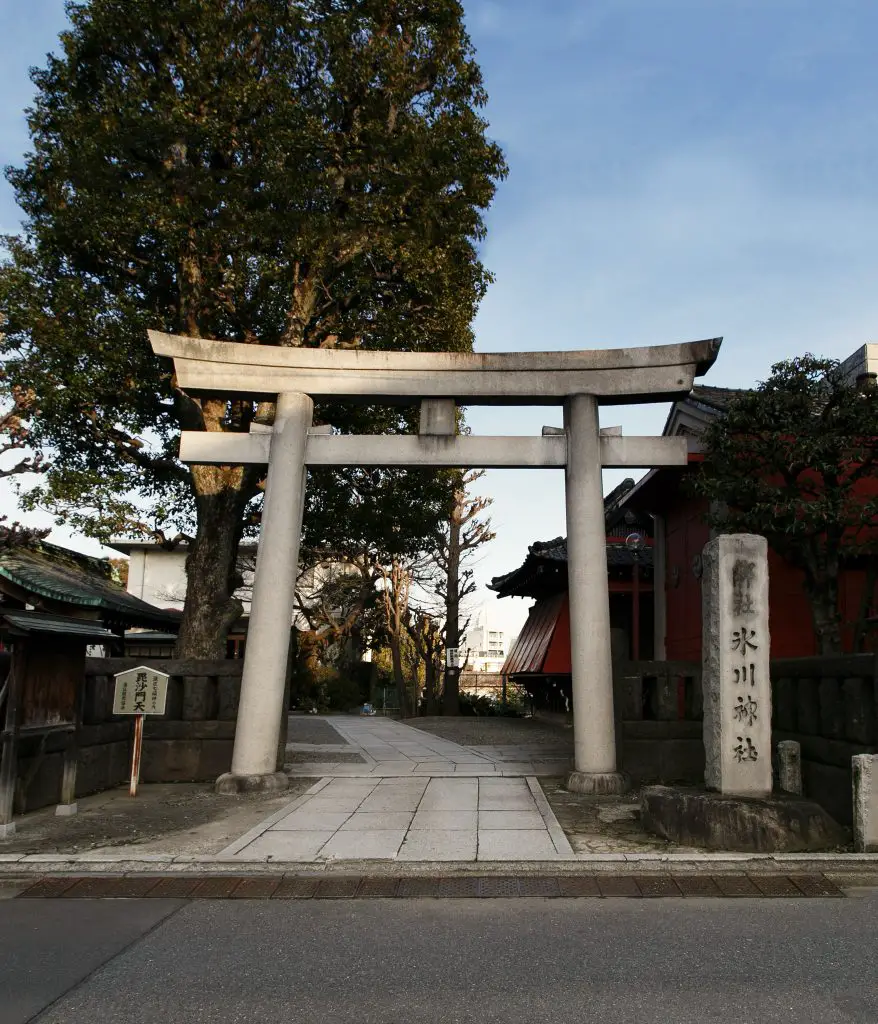
Your first stop is Hikawa Jinja shrine in Moto-Azabu.
Dahoji Temple
The next stop is Dahoji Temple which enshrines Daikokuten, the god of wealth, commerce and prosperity.
Juban Inari Shrine
From there, you continue onwards to Juban Inari Shrine, where you will find two large frog statues. According to Gamaike legend, if you pour water all over these frogs, they will protect you from fire or danger in the future.
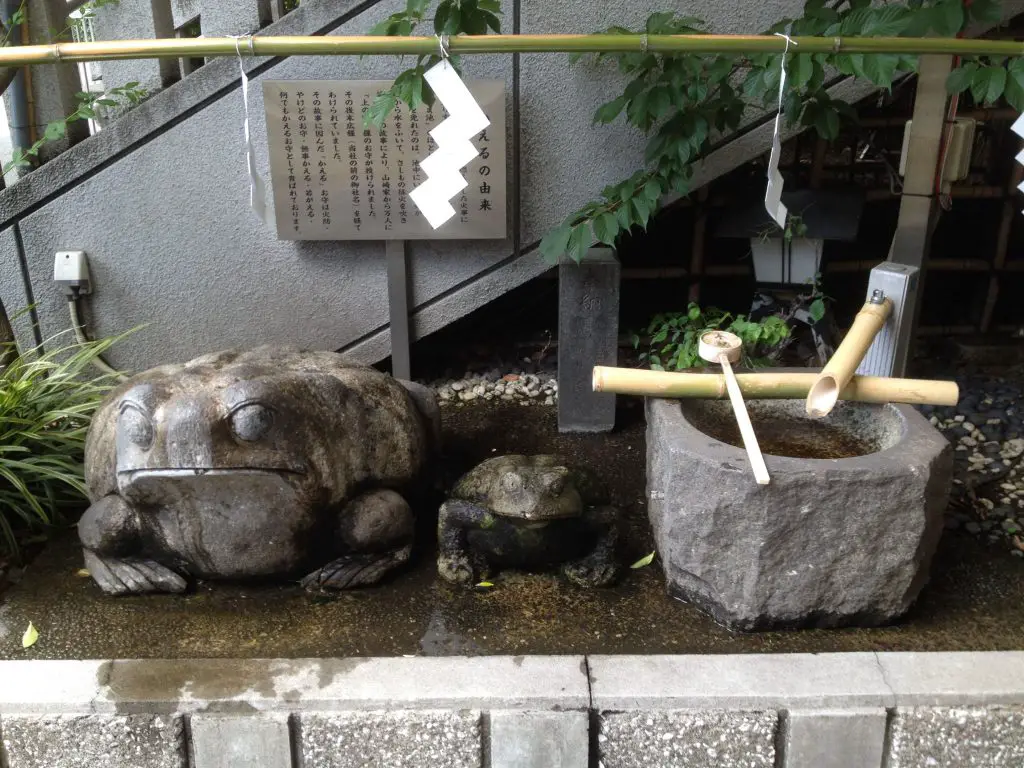
The two large frogs at Juban Inari Shrine.
Kumano Shrine
The fourth destination is Kumano Shrine in Adabudai, where people enshrine Ebisu. He is the god of prosperity and abundance (particularly when it comes to food).
Hojuin Temple
Just about 10-minute walk from Kumano Shrine, you can see Hojuin Temple which enshrines the deity of art Benzaiten.
Hisakuni Shrine
Next, it’s time for you to head to Hisakuni Shrine which has a small community park on its ground. Here, you can pray for luck for your children because Hotei, the deity here, is the guardian of children and the god of happiness.
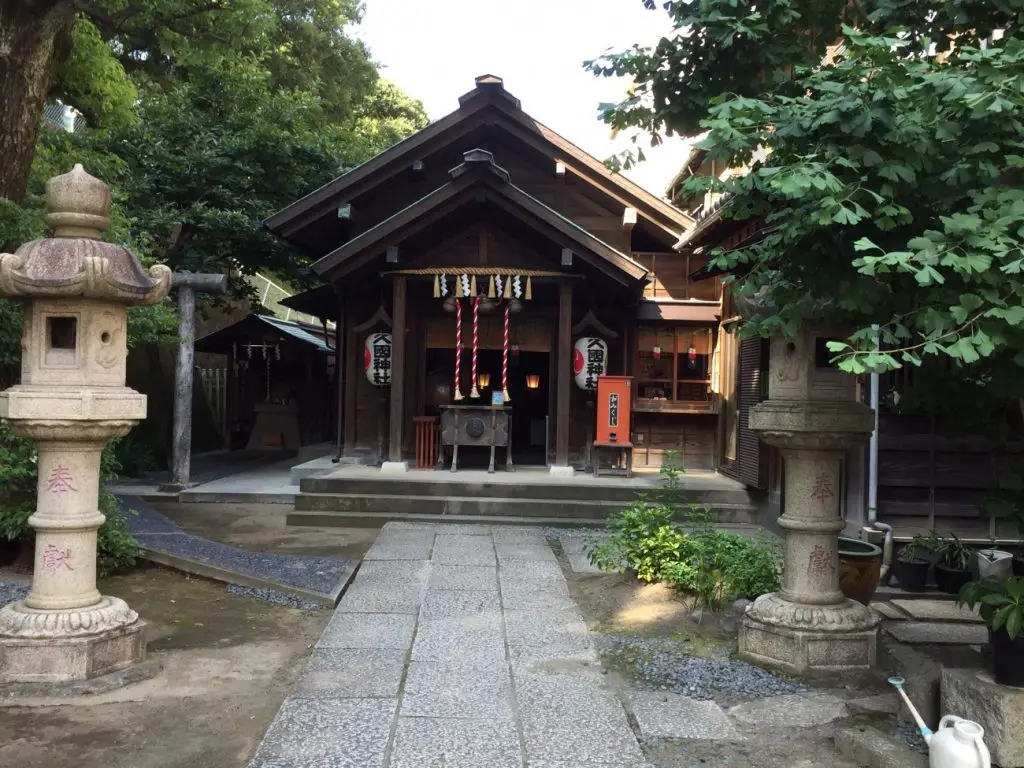
Hisakuni Shrine, where you can pray luck for your children.
Tenso Shrine
And now you will need to walk back to where we start our journey: Hikawa Shrine as the next place we will visit is near here. Tenso Shrine is the place where the deity of happiness, longevity and wealth: Fukurokuju is enshrined.
Sakurada Shrine
So there is just one stop left and you will be blessed with all the luck and fortune in the world. The final destination is Sakurada Shrine in Nishi Azabu, home to the god Jurojin, the god of longevity and the elderly. Remember that you should follow the order of visiting seven gods in order to make Shichifukujin successful.
9. Giggle At The Golden Turd At Asahi Super Dry Hall
If you don’t have a picture of the most recognizable building in the city, Asahi Building, you haven’t been to Asakusa. This is one of the offices of the Asahi Beer Company, it is mainly known for its unique structure: a gold “thingy” on top of a glittering building. While visiting this place, you can see there are lines of people are taking a photo of this strange gold object and wondering what exactly it is. The building itself is also the home to several restaurants and the Asahi Craftmanship Brewery. Not many people really want to take a look inside the building, believe me, it can’t be as impressive as the outside.
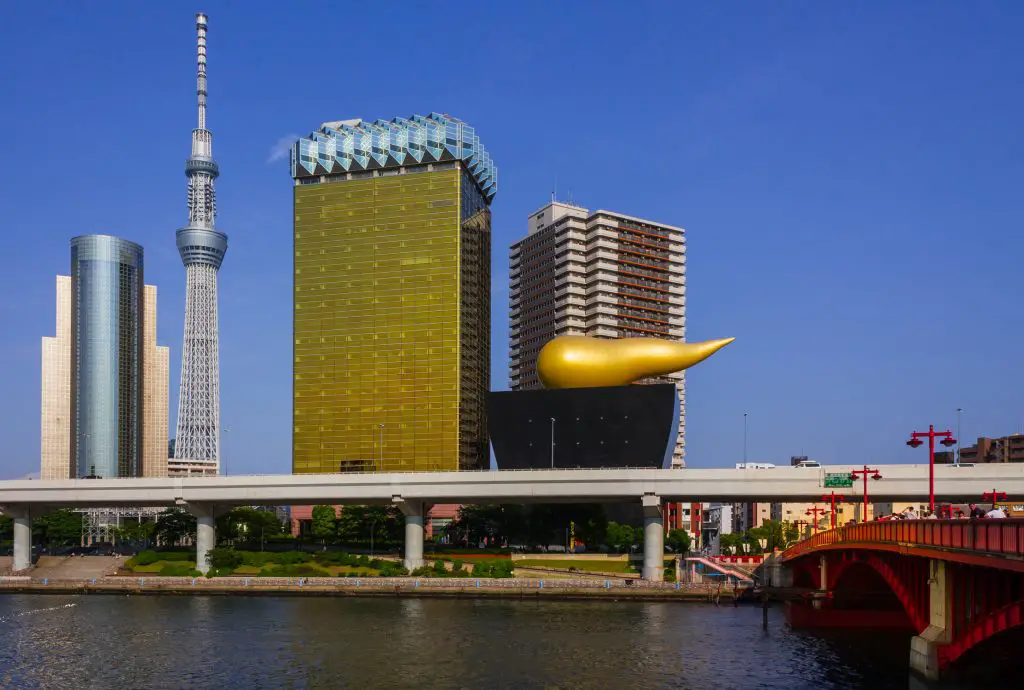
You can’t leave Asakusa without a picture of the most outstanding building in the area.
10. Explore Asakusa’s Nightlife With A Barhopping Tour
Many visitors relate Asakusa with a traditional, old-fashion area, so somehow they underestimate the nightlife in Asakusa. Planning a bar-hopping tour is the best way to enjoy the city and realize how lively it is after the sun goes down. You can try some unique local drinks, feel with the music, make more friends or even try your hand at making monjayaki, the most popular izakaya food in Asakusa. For a person who’s not really into a crowd and heated air, a night in Asakusa is perfect for you. It’s both peaceful and lively at the same time, just enough for you to end a long day of visiting.
There might be many things to do, see, eat and buy in Asakusa that can make your head spin. If you want to get the most out of a trip to this historic downtown, then consider following our Top 10 Things To Do In Asakusa. Have fun and enjoy the most of you while in this quiet and peaceful part of the city.

